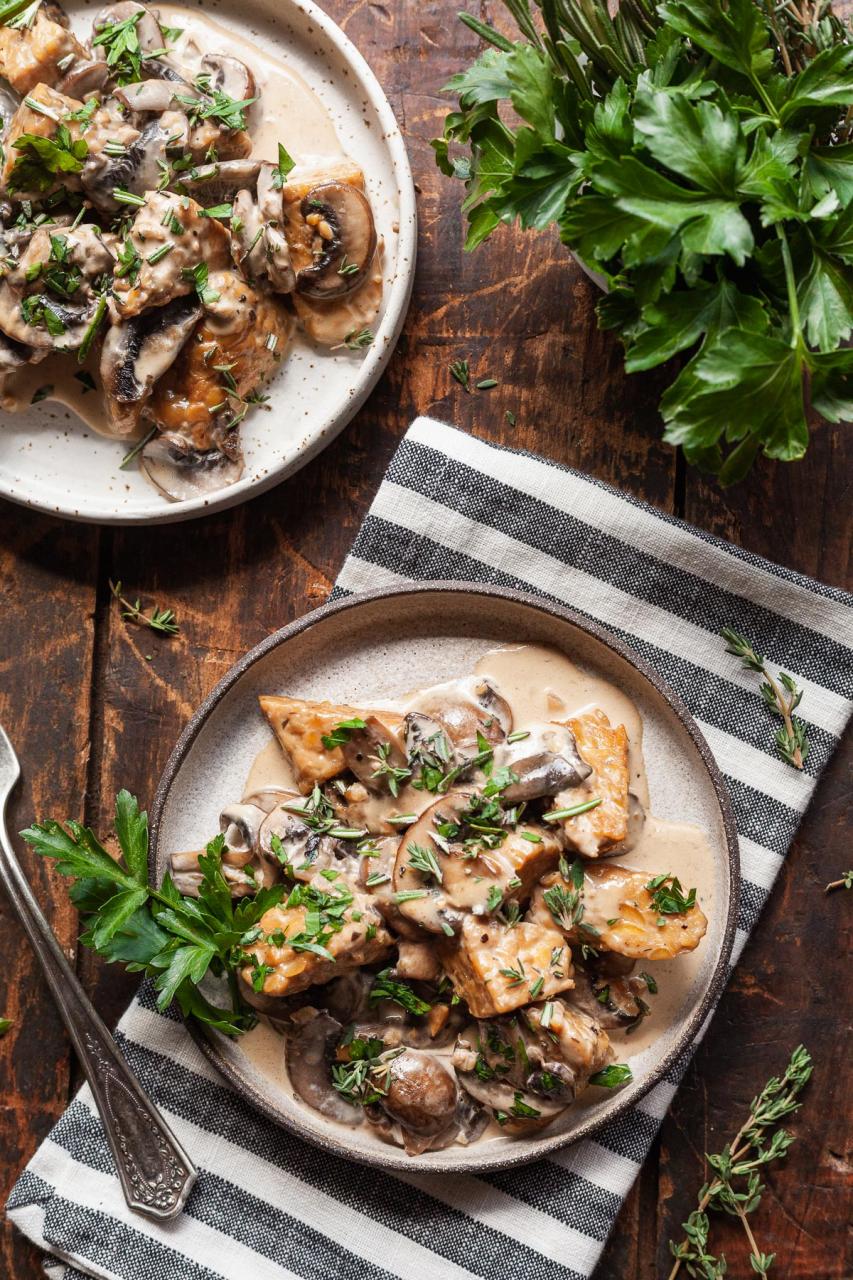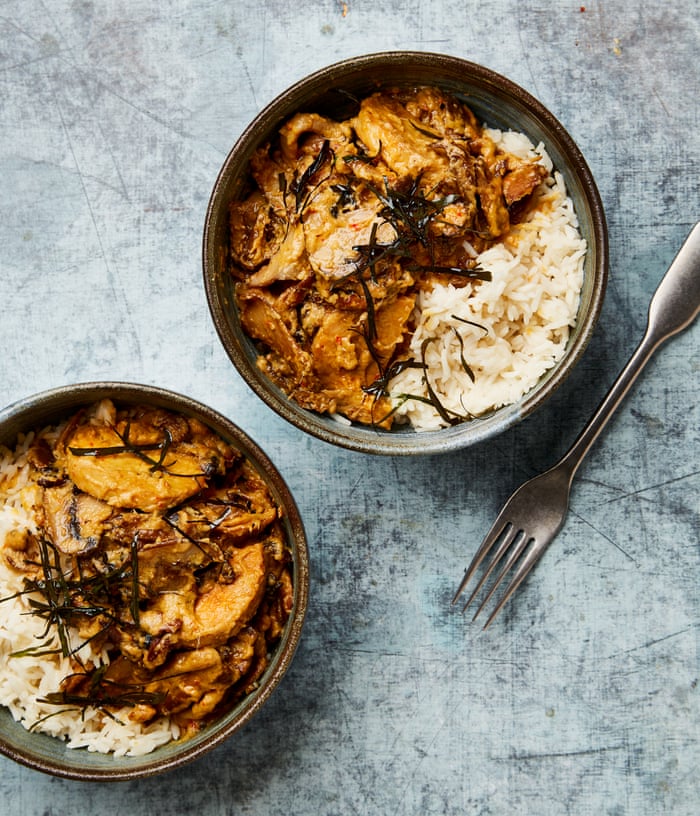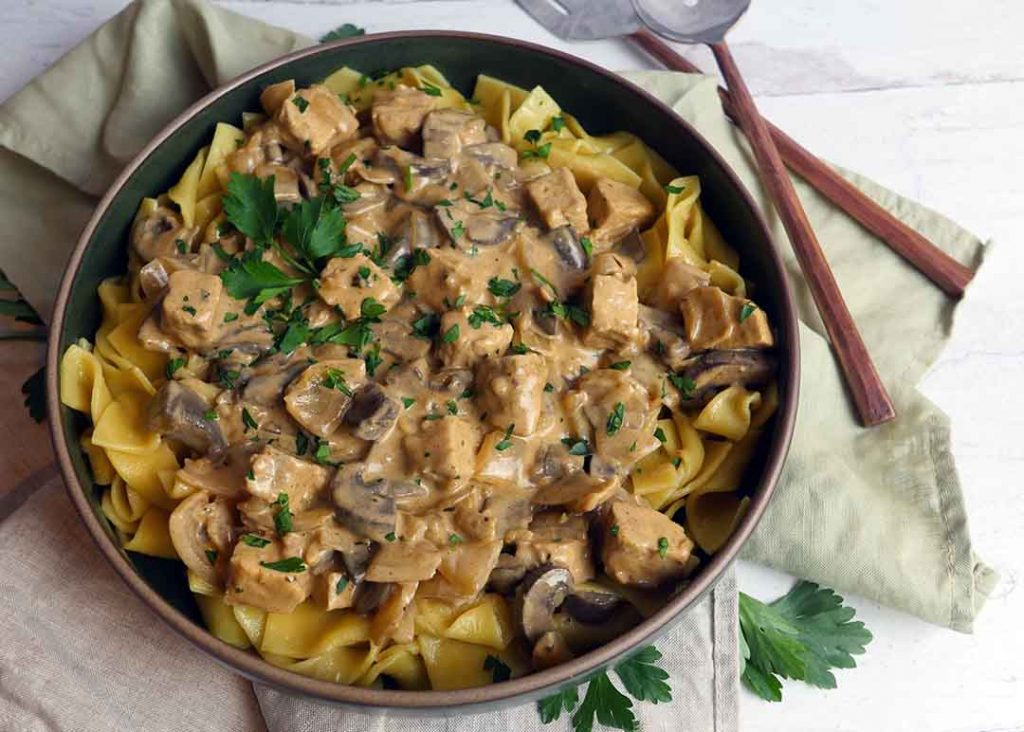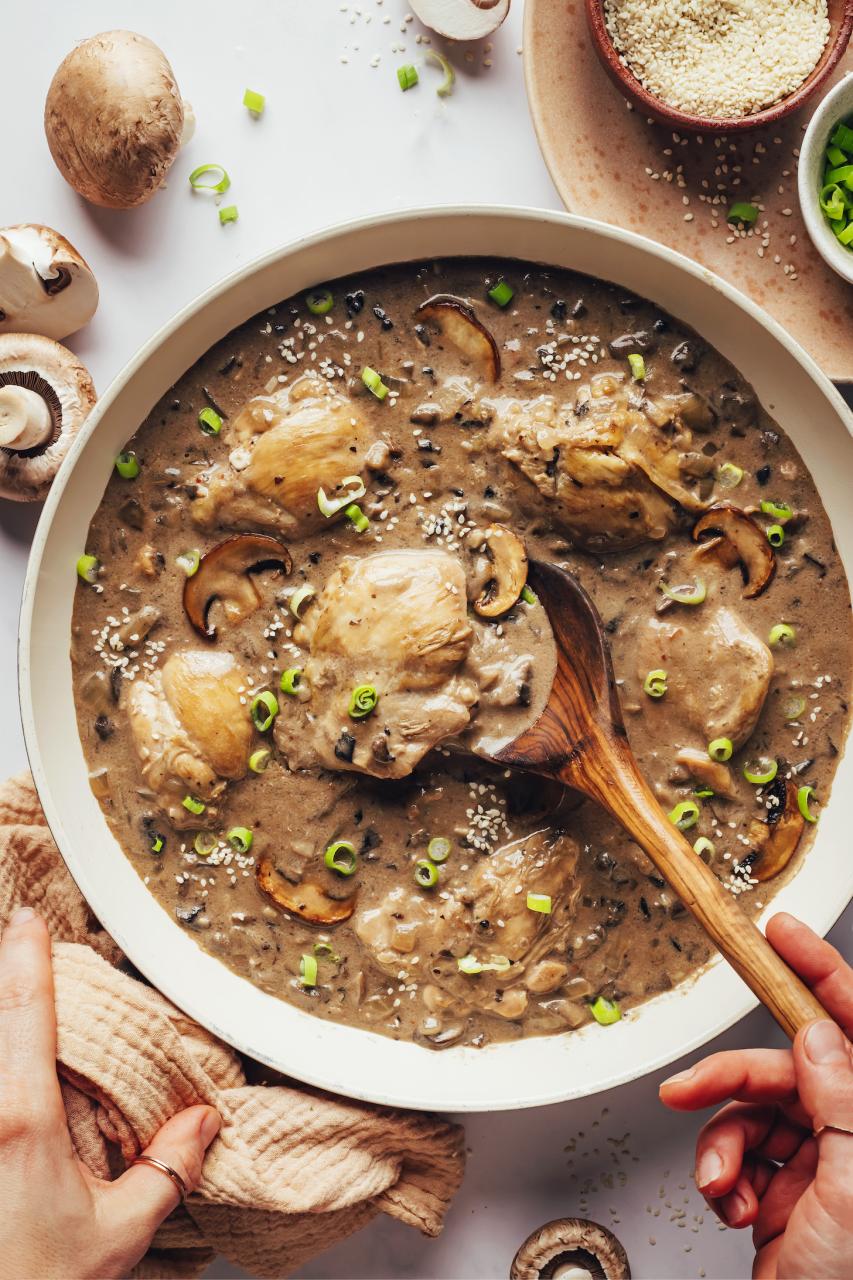The exploration of Tempeh and Mushroom cuisine unveils an exciting realm where nutrition, taste, and sustainability converge, illustrating the ever-growing appreciation for plant-based ingredients in global culinary practices. This introduction delves deep into the essence of these ingredients, highlighting their cultural significance, nutritional value, and the versatility they bring to the table, promising a journey through the flavors and traditions that celebrate tempeh and mushrooms alike.
Tempeh, a traditional Indonesian product made from fermented soybeans, has gained international acclaim for its dense, meaty texture and nutty flavor, making it a favorite among vegetarians and vegans. Its origins in Indonesia date back several centuries, embodying a rich history of sustainable food practices. Mushrooms, with their widespread varieties, have been foraged and cherished across cultures around the world for millennia. From the truffle-laden forests of Europe to the shiitake-abundant lands of Asia, mushrooms have held a place of culinary and sometimes medicinal importance in many societies.
Tempeh and Mushroom Recipe


Tempeh and Mushroom
Equipment
- 1 pressure cooker
Ingredients
- 2 tsp. Toasted sesame seeds
- 1/2 c. Vegetable stock
- 1 Chopped green bell pepper
- 1 Tbsp. Tamari
- 1 Chopped red bell pepper
- 1 block Cubed tempeh
- 1 Chopped onion
- 1 c. Sliced button mushrooms
- 1 Tbsp. Sesame oil
Instructions
- Prepare the pressure cooker with some of the sesame oil and then add your onion to the pot with it to cook a bit. The mushrooms and the tempeh will go in next and need to be warmed.
- Now add in the salt, the vegetable stock, and the tamari, stirring to combine.
- Once all of these are inside of the pressure cooker, seal the lid in place and set this to the highest pressure possible and cook for about 8 minutes.
- After the dish has some time to cook all the way through, release the pressure slowly. Once the pressure is gone, place the vegetables into a bowl and serve right away.
Cooking Tips about Tempeh and Mushroom

- Preparing Tempeh: To unlock the full flavor potential of tempeh, it’s beneficial to steam or boil it for about 10 minutes before marinating or cooking. This process helps in softening the tempeh, allowing it to absorb more flavors from seasonings or marinades.
- Marinating Tempeh: Enhance the taste of tempeh by marinating it for at least an hour, or even overnight, in a mixture of soy sauce, vinegar, garlic, ginger, and your choice of spices. This not only imparts depth of flavor but also improves its texture upon cooking.
- Sautéing Mushrooms: Begin by sautéing mushrooms on high heat with a bit of olive oil or butter. Refrain from crowding the pan to ensure they brown well instead of steaming. Browning mushrooms brings out their umami-rich flavor, adding a meaty depth to dishes.
- Incorporating Different Types of Mushrooms: Utilize a variety of mushrooms for a complex flavor and texture profile. Shiitake mushrooms offer a smoky richness, portobellos bring a meaty heft, and oyster mushrooms add delicate tenderness to dishes.
- Grilling Tempeh: Grilled tempeh can serve as a fantastic, protein-rich addition to salads, sandwiches, and wraps. Slice tempeh blocks into slabs or cubes, lightly coat them with oil and your favorite herbs or spice mix, and grill until they have nice char marks.
- Tempeh as Ground Meat Substitute: Crumble tempeh and use it as a substitute for ground meat in recipes like chili, tacos, or Bolognese sauce. It’s a wonderful way to add plant-based protein to your meals.
- Mushroom Stock: Don’t discard the stems of mushrooms like shiitakes. Instead, simmer them in water with herbs and vegetables to create a flavorful mushroom stock that can be used as a base for soups, stews, and risottos.
- Roasting for Intensity: Roasting mushrooms in the oven with a bit of olive oil, salt, and pepper concentrates their flavor and texture, making them great additives to pastas, grain bowls, or as a topping for pizzas.
Serving suggestions about Tempeh and Mushroom

- Asian Inspired Stir-Fry: Combine marinated tempeh cubes with a variety of mushrooms, such as shiitake and oyster, in a vibrant stir-fry. Serve this over a bed of jasmine or brown rice, garnishing with spring onions and sesame seeds for an aromatic meal packed with diverse textures.
- Hearty Tempeh and Mushroom Burgers: Create savory burgers by blending crumbled tempeh with finely chopped mushrooms, onions, breadcrumbs, and spices. Grill or pan-fry these patties and serve on whole-grain buns with lettuce, tomato, and a spicy vegan mayo for a fusion of hearty flavors.
- Tempeh and Mushroom Skewers: Marinate alternating pieces of tempeh and various mushrooms in a mixture of soy sauce, garlic, and ginger. Grill them to perfection and serve with a side of quinoa salad tossed with roasted bell peppers, spinach, and a lemon-olive oil dressing for a refreshing contrast.
- Creamy Mushroom and Tempeh Stroganoff: Sauté your favorite mushrooms and tempeh strips, then simmer them in a rich, creamy sauce made with plant-based sour cream and vegetable broth. Serve this luxurious stroganoff over a bed of egg noodles or mashed potatoes, garnished with chopped parsley.
- Tempeh and Mushroom Tacos: Sauté tempeh crumbles and sliced mushrooms with a blend of Mexican spices. Stuff this flavorful mixture into soft corn tortillas and top with avocado slices, fresh cilantro, diced tomatoes, and a squeeze of lime for a burst of freshness.
- Mushroom-Tempeh Goulash: Slow cook sliced mushrooms and tempeh chunks in a smoky paprika and tomato sauce until tender. Serve this comforting goulash alongside warm crusty bread or fluffy dumplings, perfect for soaking up the rich sauce.
Top 5 FAQs about Tempeh and Mushroom

- What are the primary health benefits of eating tempeh and mushrooms? Tempeh is rich in protein, containing all nine essential amino acids, making it a complete protein source comparable to animal products. It’s also packed with fiber, vitamins, and minerals, and promotes gut health due to its fermented nature. Mushrooms, while low in calories, offer a wealth of nutrients including B vitamins, selenium, potassium, and a rare non-animal sourced vitamin D when exposed to sunlight. Together, they contribute to a balanced diet supporting overall wellness and disease prevention.
- How can I prepare tempeh and mushrooms to maximize flavor? For tempeh, steaming or boiling for about 10 minutes before cooking can enhance its ability to absorb flavors from marinades or sauces. Marinating tempeh for at least an hour or overnight with a blend of soy sauce, vinegar, and spices also improves its taste and texture. When sautéing mushrooms, do so over high heat in a bit of oil without overcrowding the pan to ensure they brown rather than steam, unlocking their rich umami flavor.
- Are tempeh and mushrooms versatile in vegetarian and vegan cooking? Absolutely! Tempeh’s dense, nutty texture makes it an excellent meat substitute in various dishes, from stir-fries and grills to complex sauces. It can be marinated, baked, or crumbled into recipes. Mushrooms provide an earthy depth to meals, with varieties like portobello used in burgers, chanterelles in sauces, or morels in elegant risottos, showcasing their flexibility across numerous cuisines.
- Can mushrooms and tempeh be used together in dishes? Yes, combining sautéed mushrooms with marinated, cooked tempeh creates dishes with hearty textures and rich flavors. This pairing works well in stir-fries, skewers, and stews, offering a satisfying plant-based protein source that compliments the juiciness and earthiness of mushrooms.
- How should tempeh and mushrooms be stored for freshness? Uncooked tempeh should be kept refrigerated and consumed by the date indicated on the package. It can also be frozen for longer storage. Fresh mushrooms should be stored in the refrigerator, ideally in a paper bag allowing them to breathe, and used within a week for best quality. Keeping them in their original packaging until ready to use also helps maintain freshness.
The culmination of our exploration into Tempeh and Mushroom cuisine brings us to a profound appreciation for the versatility, nutritional benefits, and culinary innovation these ingredients afford. Both tempeh and mushrooms have deep cultural roots and have emerged as cornerstones in the movement towards sustainable and health-conscious eating. Their ability to transcend culinary boundaries, adapting to both traditional and modern dishes, highlights their integral role in diverse gastronomies around the globe.
Leave a Reply